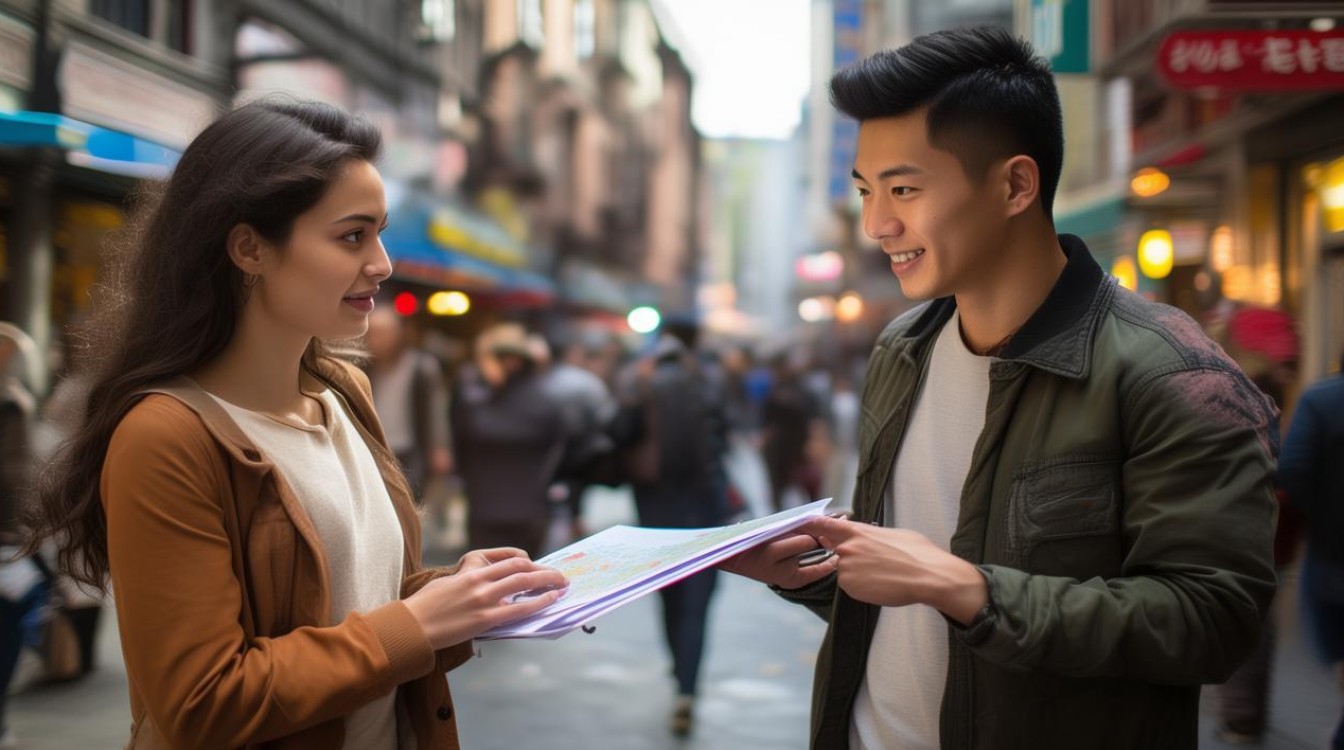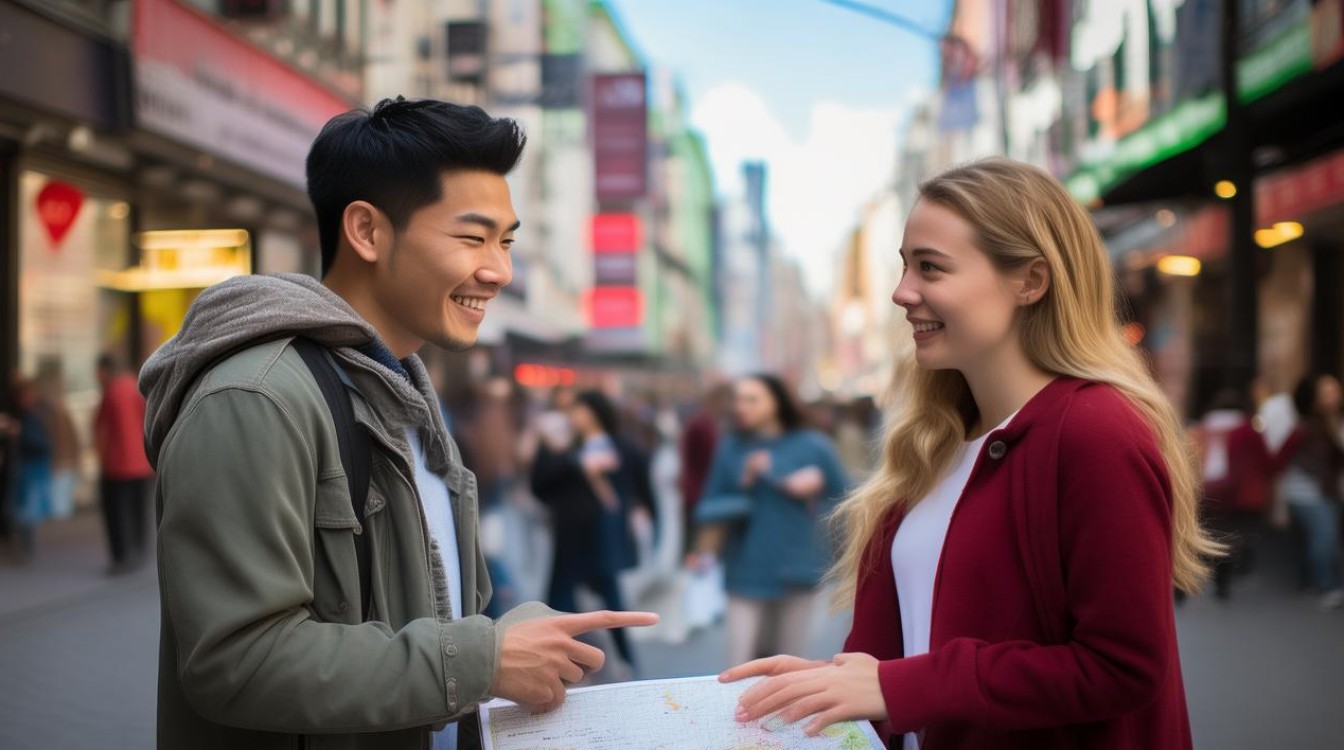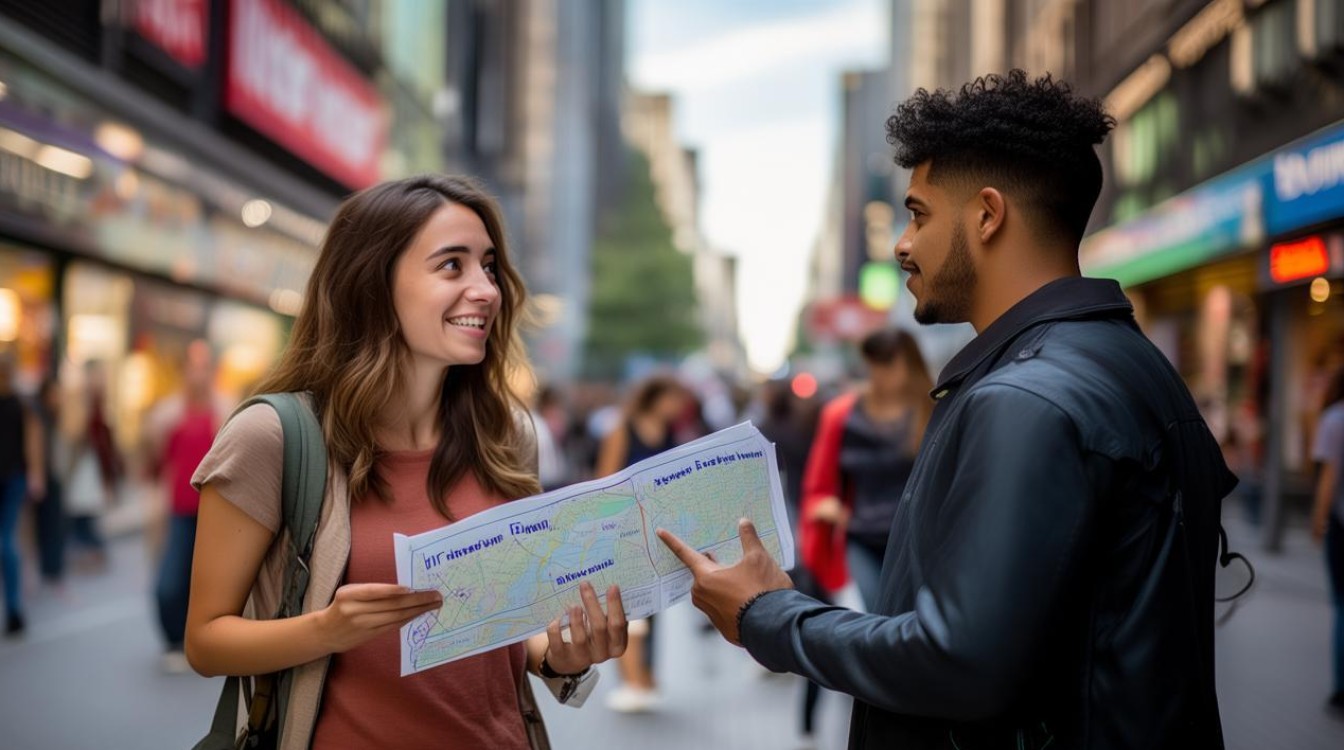在全球化背景下,英语作为国际通用语言,掌握基本的问路对话技巧至关重要,无论是旅游、留学还是商务出行,流畅的英语问路能力能大幅提升出行效率,本文将详细介绍问路常用句型、文化差异、最新实用数据,并提供真实场景对话示例。

英语问路基础句型
礼貌开场
- "Excuse me, could you tell me how to get to...?"(打扰一下,您能告诉我怎么去……吗?)
- "I'm a bit lost. Do you know where... is?"(我有点迷路了,您知道……在哪里吗?)
询问具体方向
- "Is it far from here?"(离这里远吗?)
- "Should I turn left or right?"(我应该左转还是右转?)
- "How long does it take to walk there?"(步行到那里需要多久?)
确认理解
- "So, I go straight and then turn left at the second traffic light?"(我直走然后在第二个红绿灯左转?)
- "Just to confirm, it's next to the bank, right?"(确认一下,是在银行旁边对吗?)
最新实用数据:全球热门旅游城市问路关键词
根据2023年Google Maps搜索数据分析,以下是国际游客最常搜索的英语问路关键词:
| 城市 | 高频问路地点 | 常见问法 |
|---|---|---|
| 伦敦 | Buckingham Palace | "How to get to Buckingham Palace?" |
| 纽约 | Times Square | "Where is the nearest subway to Times Square?" |
| 东京 | Shibuya Crossing | "Which exit for Shibuya Crossing?" |
| 巴黎 | Eiffel Tower | "Best route to Eiffel Tower from here?" |
| 悉尼 | Sydney Opera House | "Is there a ferry to the Opera House?" |
(数据来源:Google Maps 2023年度热门搜索报告)
文化差异与注意事项
-
英美差异
- 英国常用 "roundabout"(环岛),而美国多用 "traffic circle"。
- 在美国,"sidewalk" 指人行道,而英国用 "pavement"。
-
肢体语言

在亚洲国家,指向某处时建议用手掌而非手指,避免显得不礼貌。
-
科技辅助
- 根据Statista 2023年数据,87%的国际游客会使用Google Maps或Apple Maps辅助问路,但仍建议掌握基础对话以防网络不畅。
真实场景对话示例
场景:在伦敦询问去大英博物馆的路线
Tourist: Excuse me, I’m trying to get to the British Museum. Could you help me?
Local: Sure! It’s about a 10-minute walk from here. Go straight down this street, then turn left at Russell Square.
Tourist: Left at Russell Square? Is there a sign for the museum?
Local: Yes, you’ll see it right after the square. Alternatively, you can take the Piccadilly Line to Holborn Station.
Tourist: Thanks! Is it better to walk or take the Tube?
Local: If the weather’s nice, walking is lovely—you’ll pass some great cafes too.

提升问路效率的技巧
-
提前标注关键地标
使用Google Maps的“保存地点”功能,提前标记酒店、景点等,便于快速询问。
-
学习当地发音
例如在法国,"Rue"(街道)发音接近“Roo”,准确发音能提高沟通效率。

-
备用短语
- "Can you show me on my phone’s map?"(您能在我手机地图上指一下吗?)适用于语言障碍时。
个人观点
英语问路不仅是语言能力的体现,更是跨文化沟通的重要技能,结合科技工具与传统对话,能大幅提升出行体验,多练习、保持礼貌,即使语言不流利,也能通过清晰的表达获得帮助。











